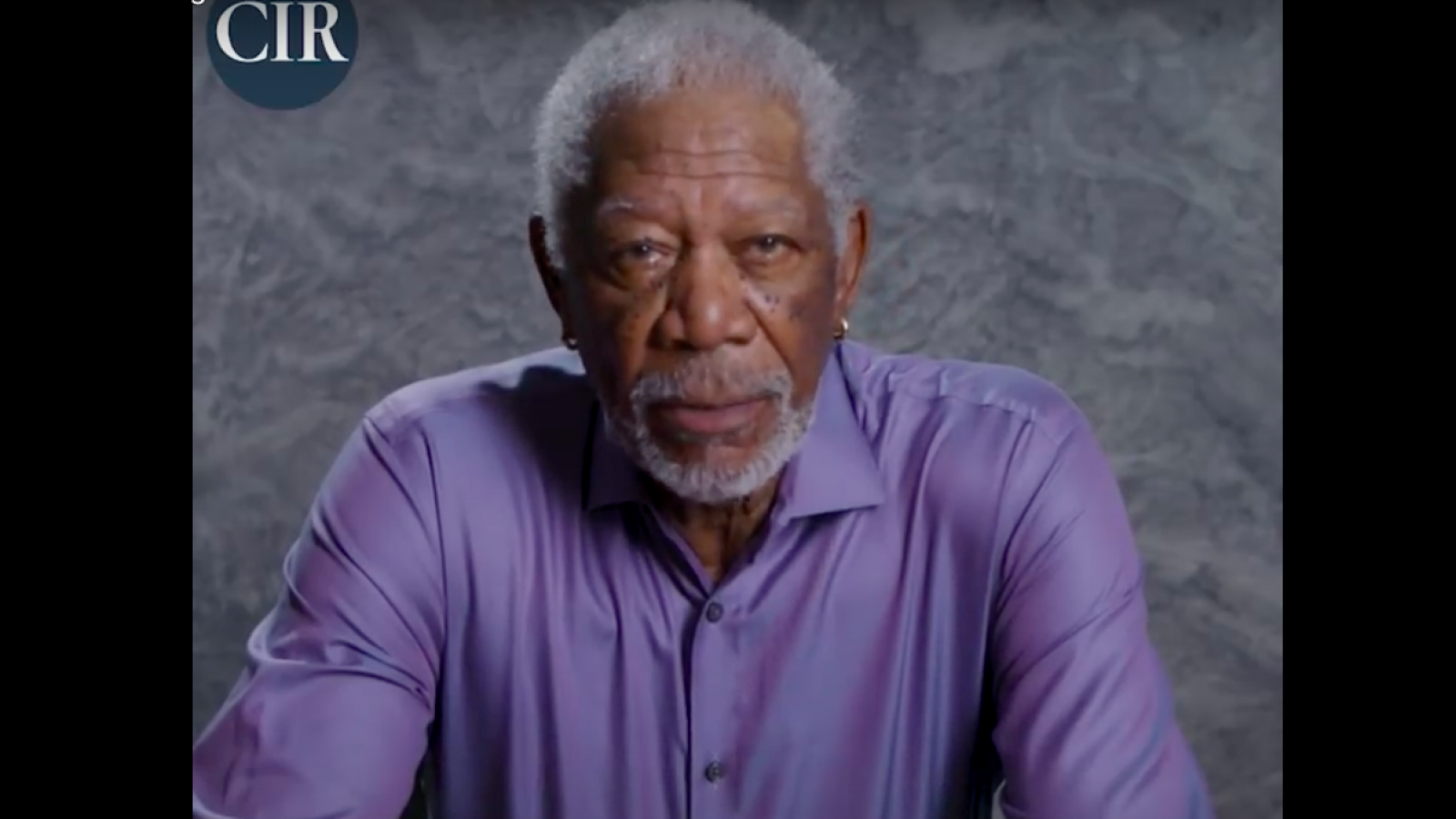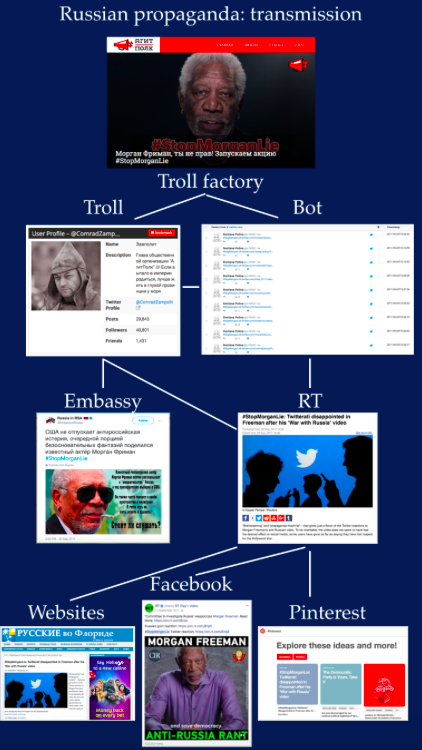
The Atlantic Council, a nonpartisan think tank focused on international affairs, has published a case study showing how Russian propaganda operations work and why they are successful.
The Russian government’s propaganda and influence operations use a full spectrum model which spans social and traditional media.
Some of the channels it uses are overt and official; others are covert and claim to be independent. They all work together to create the appearance of multiple voices and points of view, masking a coordinated approach.
The Council's Digital Forensic Research Lab coincidentally used the Committee to Investigate Russia's launch video featuring Morgan Freeman as its starting point.
The tone was dramatic, but based on facts; the U.S. intelligence community, and many open-source researchers, including @DFRLab, have shown how Russian sources spread propaganda attacking Hillary Clinton throughout the U.S. election of 2016.
Freeman’s high-profile intervention quickly produced a response in Russia. On September 20, 2017, an online group called “AgitPolk” launched a hashtag called #StopMorganLie, accusing Freeman of “manipulating the facts of modern Russian history and openly slandering our country.”
DFRLab goes on to show, step-by-step, how the hashtag spread and explains the coordinated effort between troll factories, the Kremlin, and state-run media like RT.
The importance of the #StopMorganLie campaign was in what it showed us about the Russian propaganda machine.
The hashtag was launched by a website which appears to be run from the troll factory. Initially, it was amplified by Twitter and VK accounts, human and automated, run by the same organization.
The campaign was then amplified by the verified accounts of Russian diplomatic missions, which added their own memes to the mix. It was further boosted by RT, which used carefully vague wording and selective tweets to make it look more significant than it really was.
Each of these outlets claims to be a separate institution; in a genuine, pluralist democracy in which the media are editorially independent of the state, they would be. However, their independence is a facade: on this evidence, they work together to promote a common narrative.
Full story: Russia’s Full Spectrum Propaganda (Medium)
